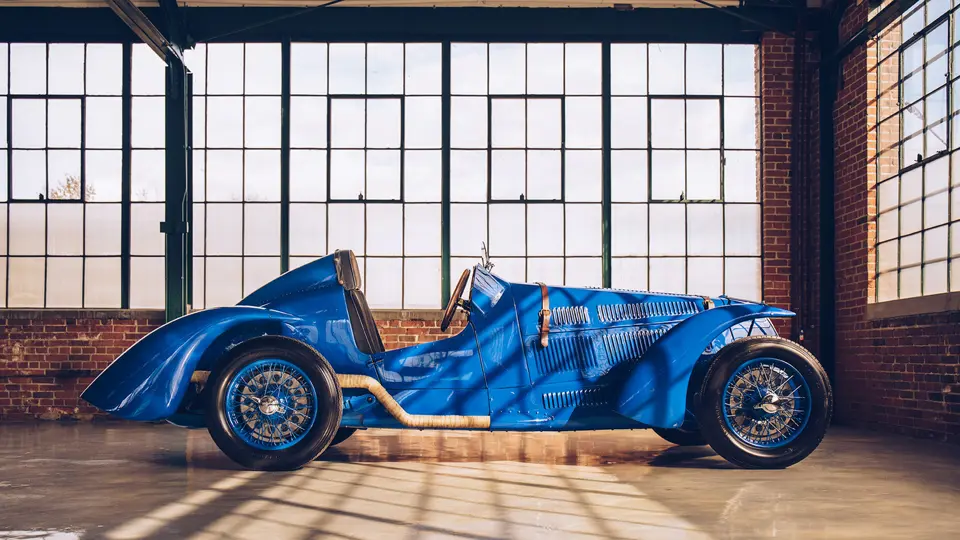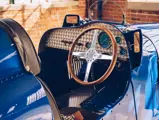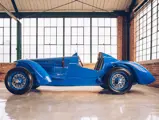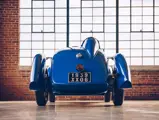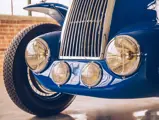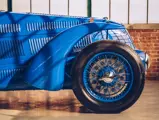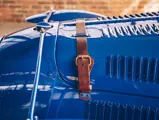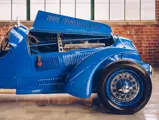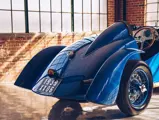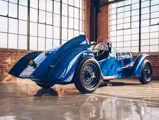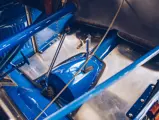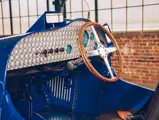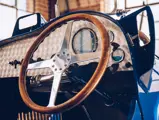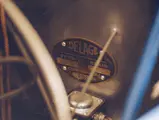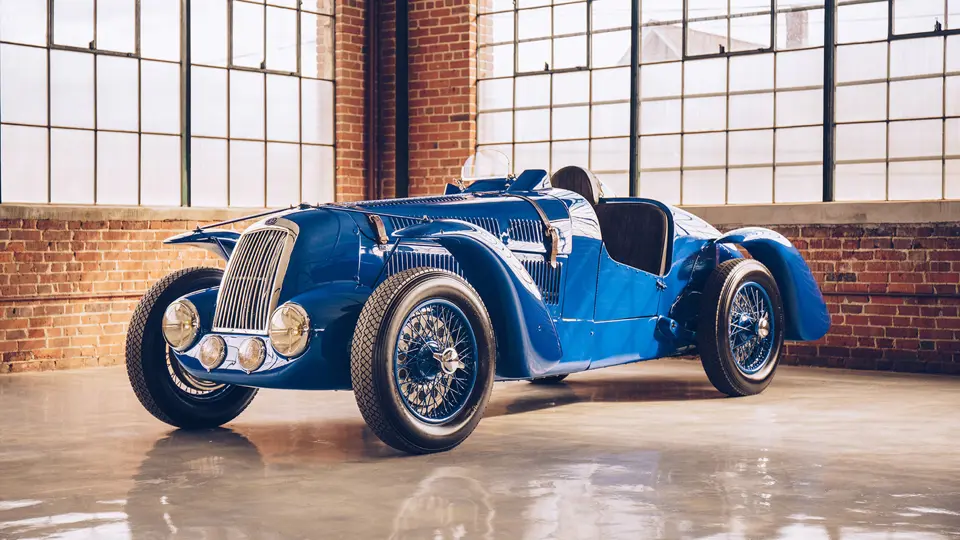
1939 Delage D6-3L Grand Prix
{{lr.item.text}}
$600,000 - $750,000 USD | Not Sold
{{bidding.lot.reserveStatusFormatted}}
- One of two works Delage D6 3-Liter Grand Prix racers produced just prior to WWII
- Significantly competed at the 1939 24 Hours of Le Mans and 1940 Mille Miglia, among other pre-war events
- Equipped with a competition-specification Delage 3.0-liter engine and four-speed Cotal preselector gearbox
- Acquired from the storied Schlumpf Reserve Collection in 1966; later restored and rallied by a French enthusiast in the 1990s
- Wears a more recent restoration in pre-war specification; an ideal candidate for further racing use, with Le Mans Classic and Mille Miglia Storica eligibility
RACING ON THE EVE OF WAR
By 1939, war in Europe was all but inevitable, yet motorsports rivalries and racing developments continued unabated; it is bittersweet that some of the most glorious cars and inspiring drivers of all time came to prominence just before the Continent plunged fully into conflict. The racing Delages were among these fantastic, last-of-their-era machines, and this 1939 D6-3L Grand Prix racer is a particularly noteworthy example of the breed.
Walter Watney, a Paris-area Delage distributor, had acquired the rights to the Delage marque in the mid-1930s. Using a manufacturing partnership with Delahaye to keep the Delage name alive, he realized that motorsport was an invaluable marketing tool for Delage’s powerful, durable cars. Louis Gérard, a wealthy Delage client and highly capable gentleman racer, seemed the ideal man to bring Watney the wins (and publicity) he needed; Gérard had won his class, and achieved 4th overall, at Le Mans in his Delage in 1937, and earned the RAC Tourist Trophy at England’s Donington Park the following year.
All was building toward what seemed destined to be an exceptional 1939 season. That year, Ecurie Watney (as the Delage works effort was known) prepared two competition D6 3-liter chassis: The car offered here, chassis number 51280, as well as a sister chassis, 51281. Each used specially prepared 3-liter, triple-carbureted racing engines that were said to develop as much as 150 horsepower—and just as importantly, to do so reliably.
According to research on file, the first race of record for chassis 51280 was the Grand Prix d’Anvers, Belgium, held on 21 May 1939. Louis Gérard managed a respectable 5th in the first two rounds, though a broken suspension retired him in the third. But the real prize, of course, was to be found at the Circuit de la Sarthe. Historians generally agree that Gérard and Georges Monneret piloted 51281 (wearing race #21) to a thrilling 1st in class and 2nd overall at the 1939 24 Hours of Le Mans; Armand Hug and Roger Loyer, driving this car, chassis 51280 (wearing race #22) would retire after 152 laps due to a crash. As war erupted just months after the conclusion of the race, this was to be its last running until 1949—but it was not to be chassis 51820’s final outing. Chassis 51280 competed at the Grand prix of Comminges in France in August 1939, though driver Monneret did not finish the race.
Then, despite Germany’s invasion of Poland in September 1939, Italy proceeded with the running of the Mille Miglia in 1940. This was not to be a routine “Mille,” however: The race consisted of nine laps of a 104-mile circuit (consequently, the event was also called the Brescia Grand Prix). Even more unusually, while Ecurie Watney and Louis Gérard were able to obtain dispensation from French authorities to ship chassis 51280 and 51281 to Italy for the race, only one Frenchman, Gérard—and no experienced drivers or mechanics—were permitted to accompany the cars.
Instead, Ecurie Watney was forced to make do with local crews and drivers. All things considered, they made out quite well: Piero Taruffi and Luigi Chinetti would drive 51281, and Gianfranco Comotti and Archimede Rosa would pilot 51280. Unfortunately, neither car completed the event, with 51280 believed to have been damaged after a fire during refueling. Given what was an undoubtedly chaotic on-the-ground situation following the race’s conclusion, only chassis 51281 would accompany Gérard back to France. Chassis 51280, likely due to its damage suffered from the race, was left behind in the soon-to-be-warring country.
Although its wartime history and immediate post-war racing history is presently unknown, previous research indicates chassis 51280 was acquired by two Belgian racers by the names of Breyre and Trasenster in the late 1940s. The pair also acquired a post-war Delage D6-3L, chassis number 880002, that driver Giovanni Bracco had crashed dramatically at the 1947 Modena Grand Prix. They are said to have used elements of both chassis to create the Delage D6-3L they entered at the 1948 and 1949 runnings of the Spa 24 Hours; in both cases, they failed to finish.
Given the extent of the damage to 880002—which rendered the car undrivable, and by all appearances unsalvageable—it is plausible that chassis 51280 borrowed little more than the identity, and perhaps some of the updated bodywork, of the destroyed post-war Delage for entry into the Spa 24 Hours.
A 3-LITER GRAND PRIX DELAGE, REBORN
Chassis 51820 was eventually acquired in a disassembled state from the infamous France-based collection of Hans and Fritz Schlumpf; it was held in their reserve of unrestored, spare, and parts cars. In 1966, the chassis, drivetrain components, and elements of the bodywork, were acquired from the Schlumpf reserve by a Mr. Catellani of Italy (a copy of this bill of sale is on file).
In 1991 Joel Humbert, an enthusiast in the south of France, acquired the car from Catellani. At this time, he invited historian Michael Courtonne to inspect and photograph the components; as outlined in a report on file, he noted that the somewhat weathered chassis (numbered 51820) was accompanied by a radiator, engine block, gearbox, front and rear axles, and firewall (which bore an oval plate numbered 51820), along with damaged bodywork including the nose, fenders, and part of the rear. Humbert then restored the car to operational, pre-war configuration for the purposes of vintage racing, earning an FIA Historic Technical Passport for the chassis in 1997.
In 2002, the Delage entered a prominent private collection in the United States, and a careful investigation of the car, followed by a professional restoration, soon commenced. Inspection of the chassis and drivetrain revealed a proper short-stroke 3.0-liter engine complete with competition-specification pistons (with three piston rings, rather than the four found on production vehicles). Additional surviving competition-specification details included a modified camshaft, lightweight aluminum head, front spindles to give the car a wider front track, a competition rear axle, and chassis reinforcement; importantly, worn chassis stampings confirming this to be chassis number 51820 were also uncovered.
Further, during this restoration, paint and filler were stripped from the aluminum body, revealing damage to the fenders and tail (as shown by photos on file); this is consistent with historian Michel Courtonne’s earlier observations, indicating that elements of the car’s original, race-damaged bodywork have survived to the present.
Clad now in the entirely suitable coat of French Racing Blue, with purposeful leather straps securing the hood above the competition-spec Delage 3-liter inline-six and an exhaust pipe barking away by the driver’s side, this rare racer still shows well, reflecting the careful maintenance it has received since its most recent restoration. Representing a final, defiant roar of a golden age of motorsport brought to a sudden halt by the outbreak of World War II, this 1939 Delage D6-3L Grand Prix, one of only two such works cars, is a compelling part of motorsport history.
Accompanied now by a substantial history file documenting its racing career, rediscovery, and restorations, it offers its next owner the opportunity to participate in premiere vintage racing events and rallies worldwide, including Le Mans Classic and the Mille Miglia Storica—should they wish to get a taste of this bygone era for themselves.
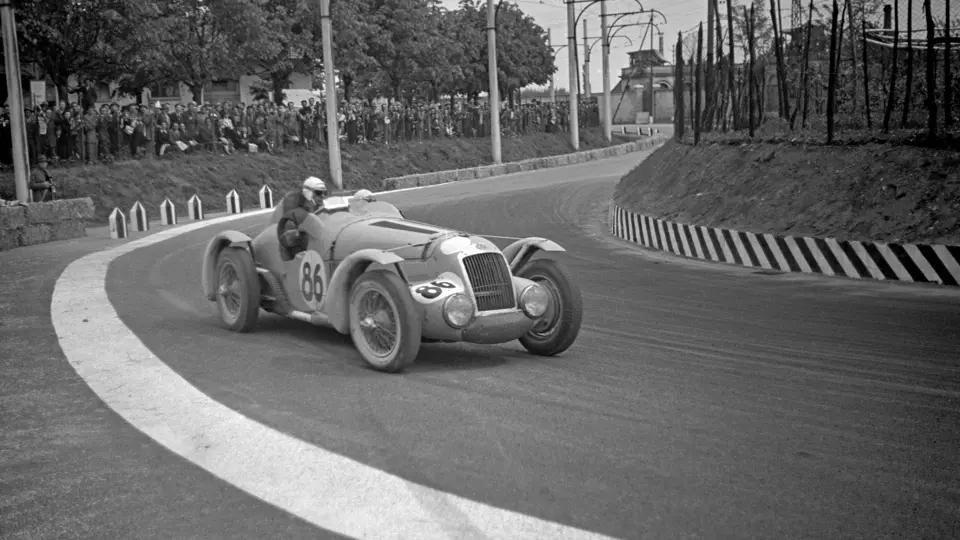

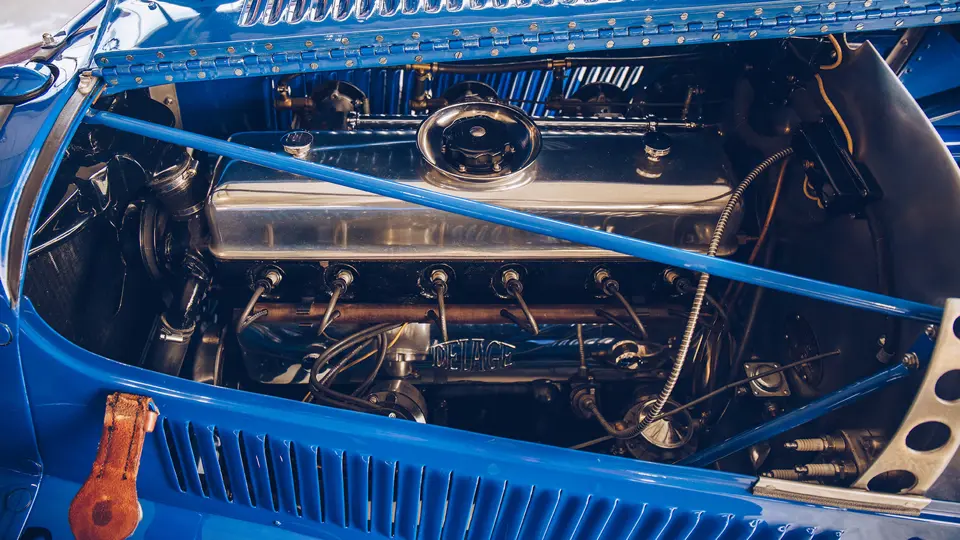

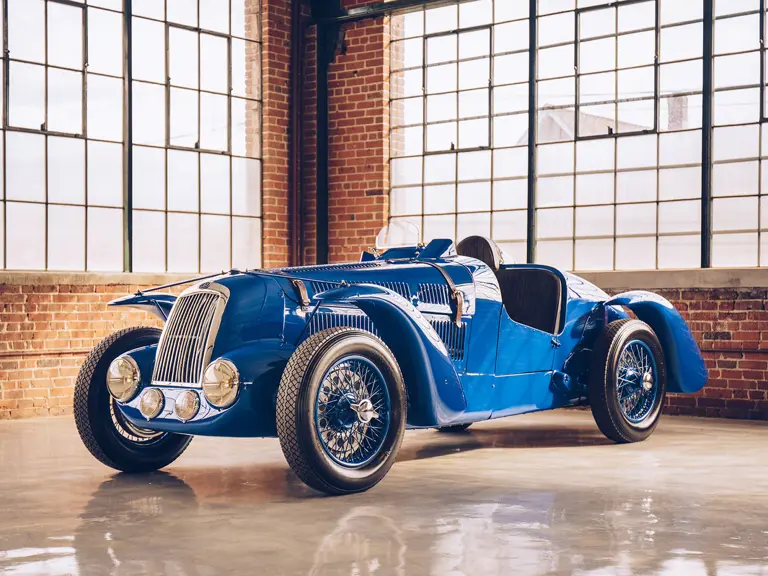
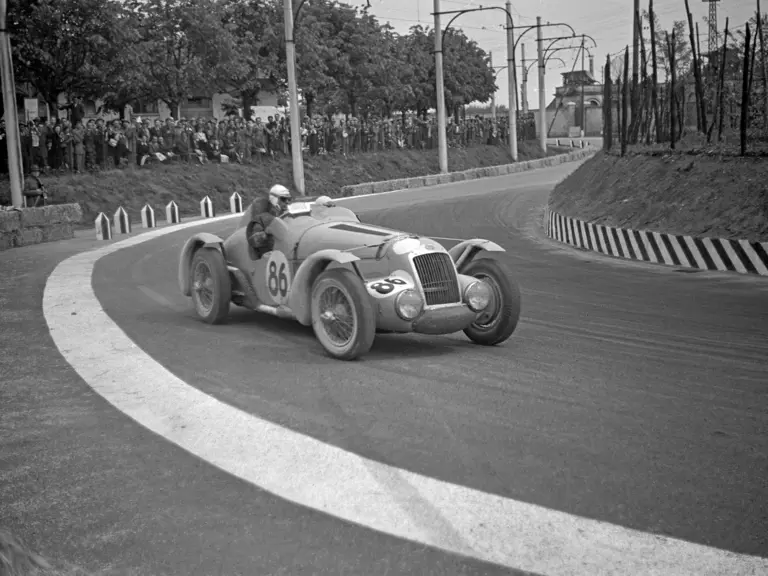
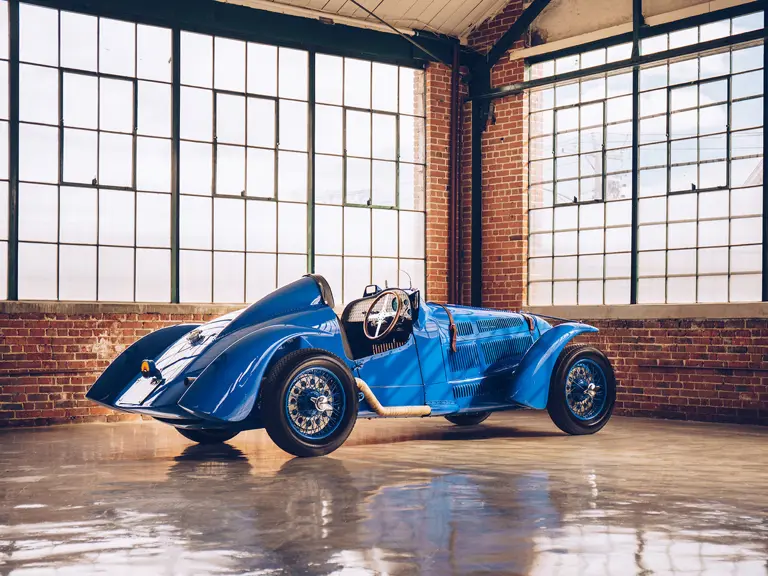
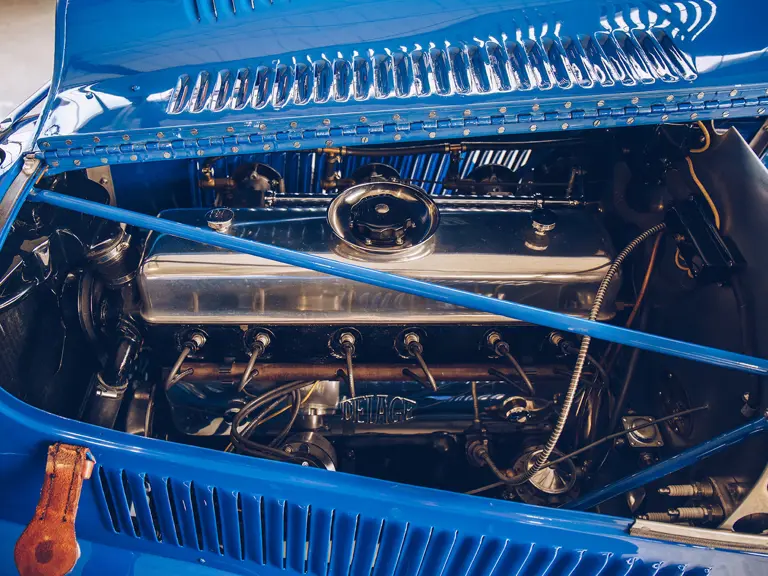
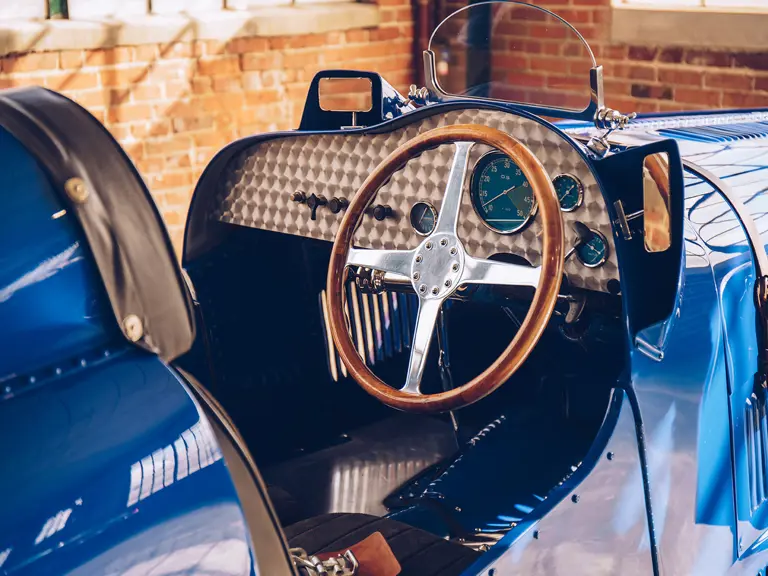



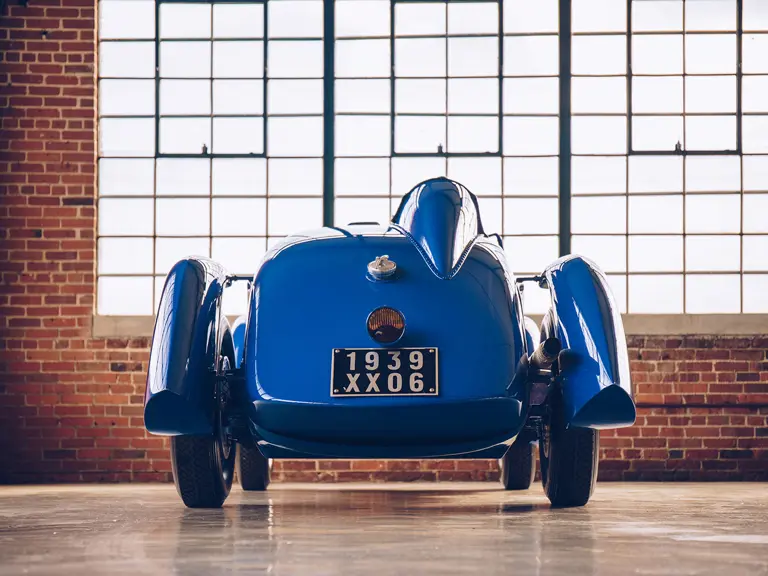
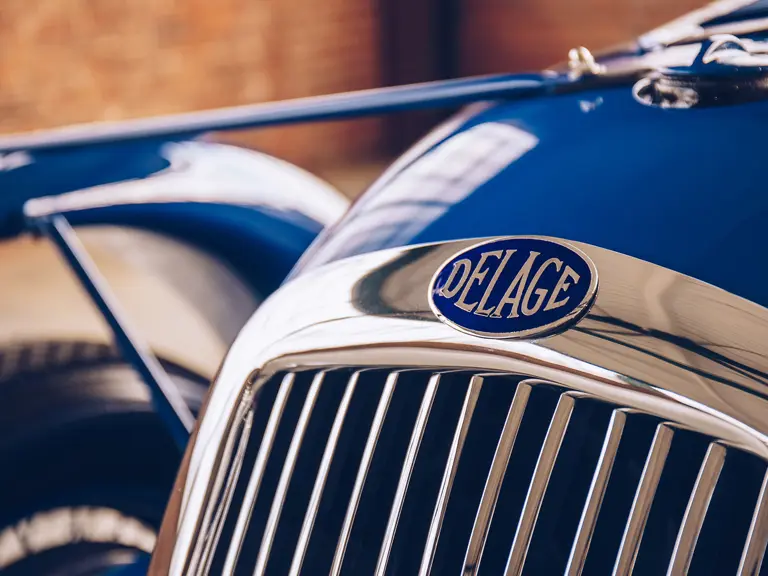
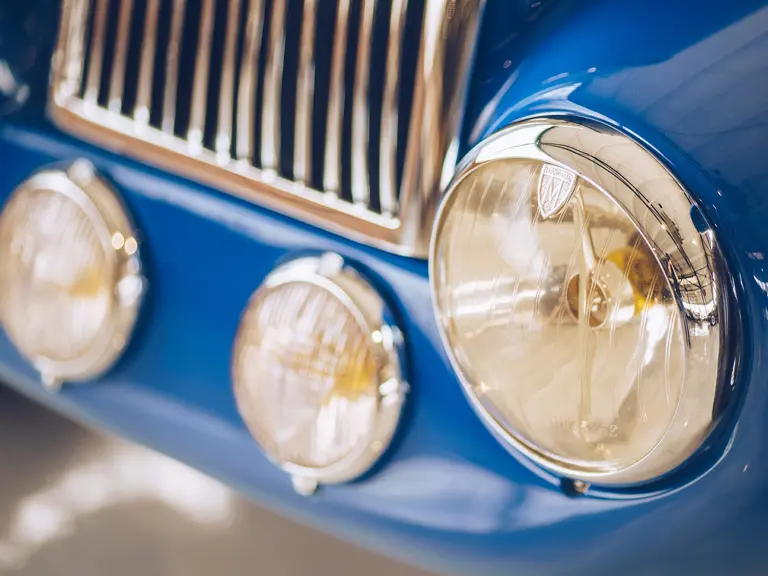

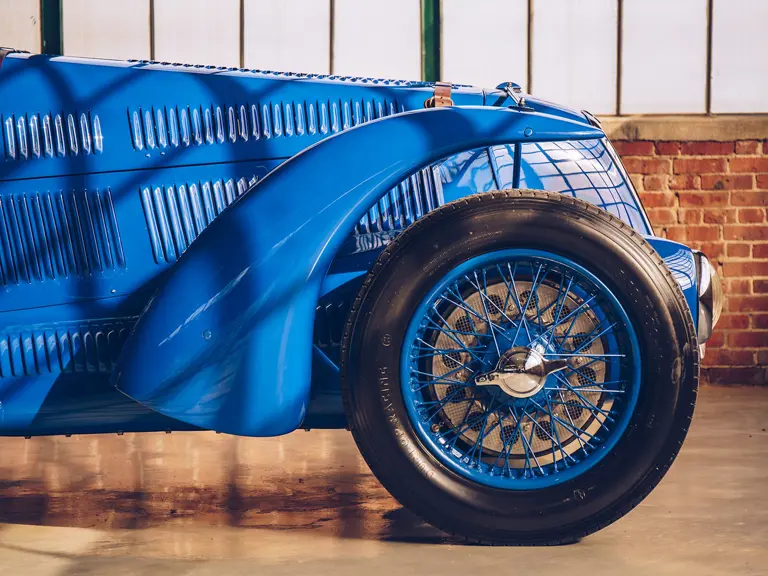
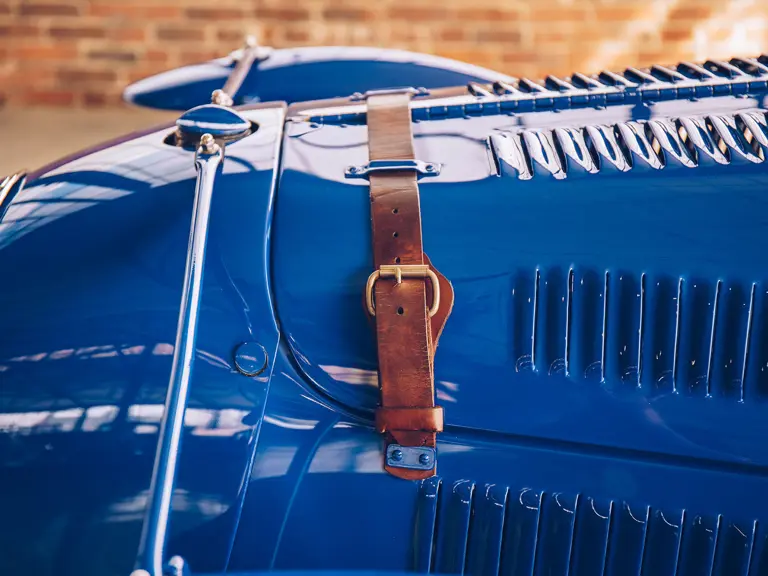


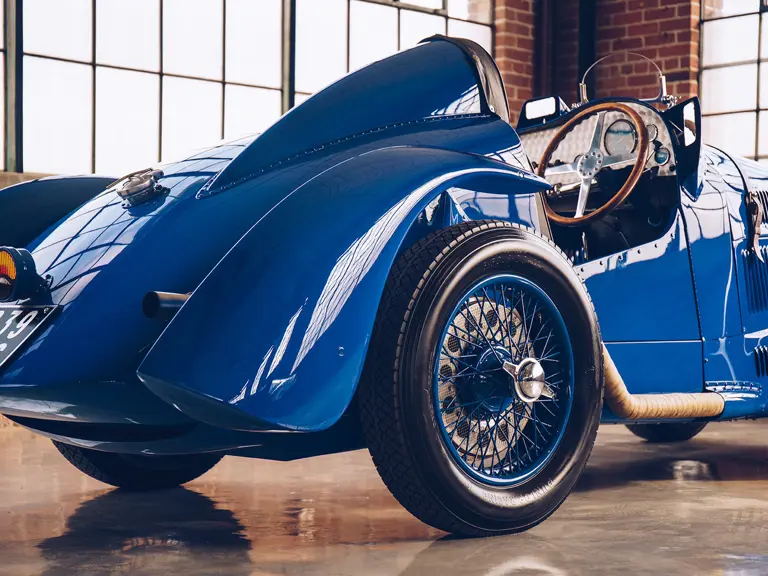
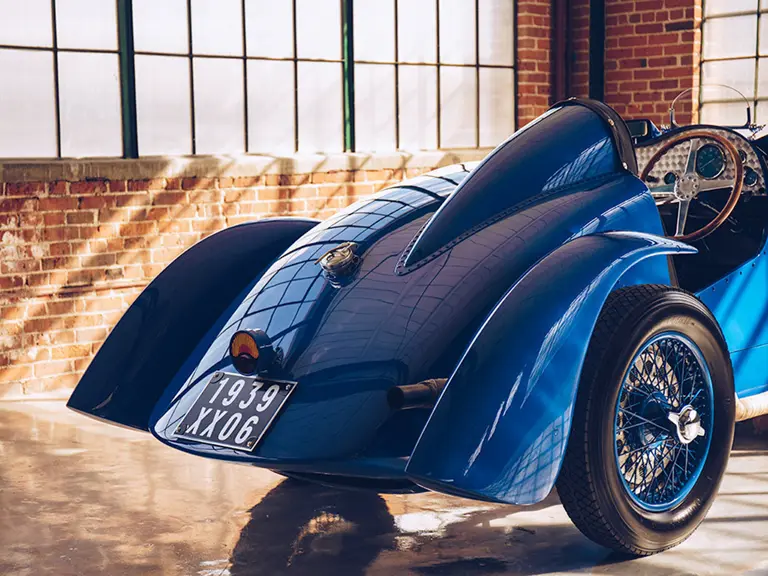
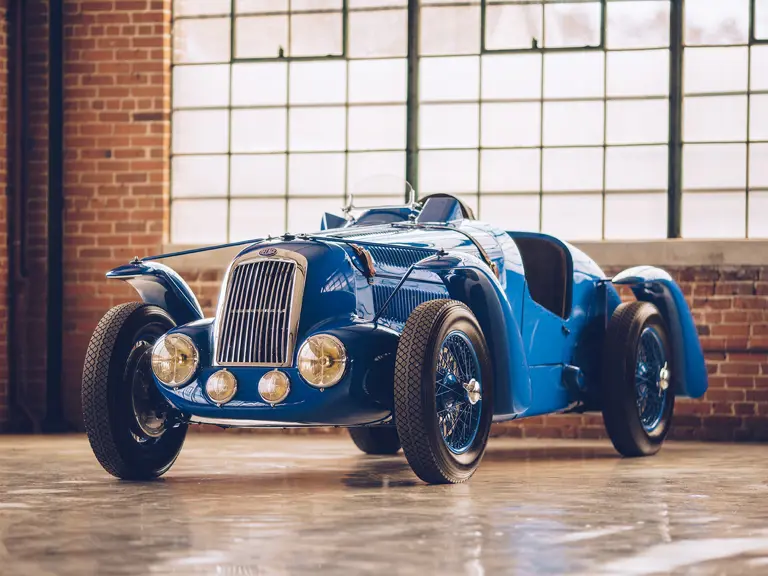
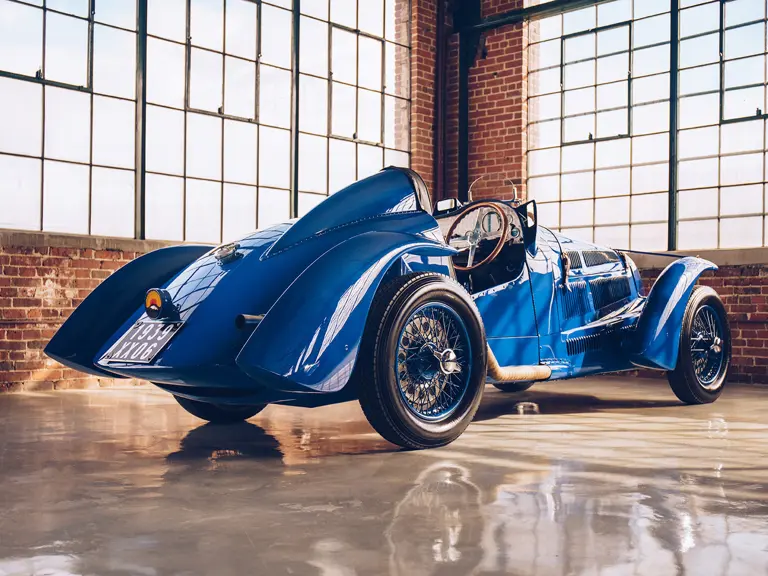
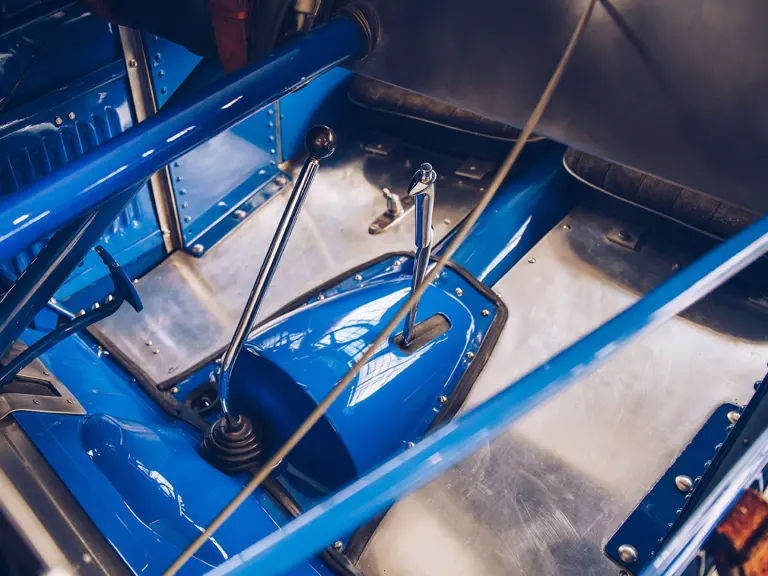
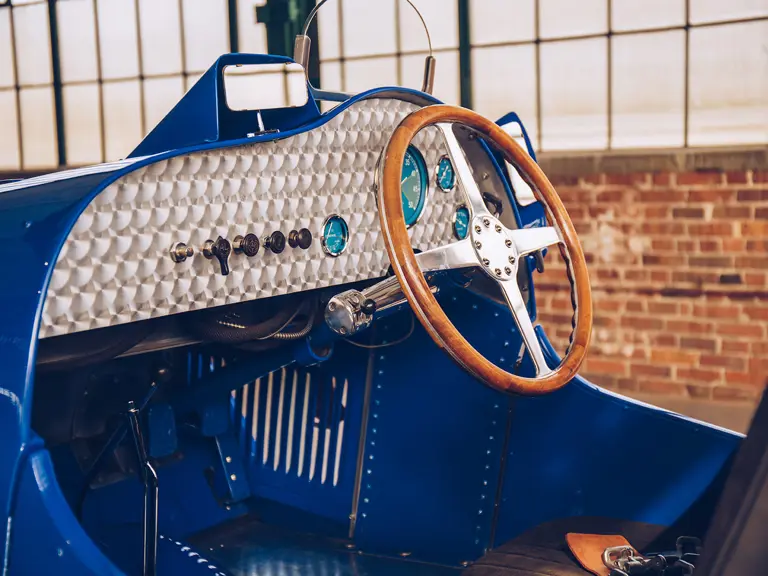
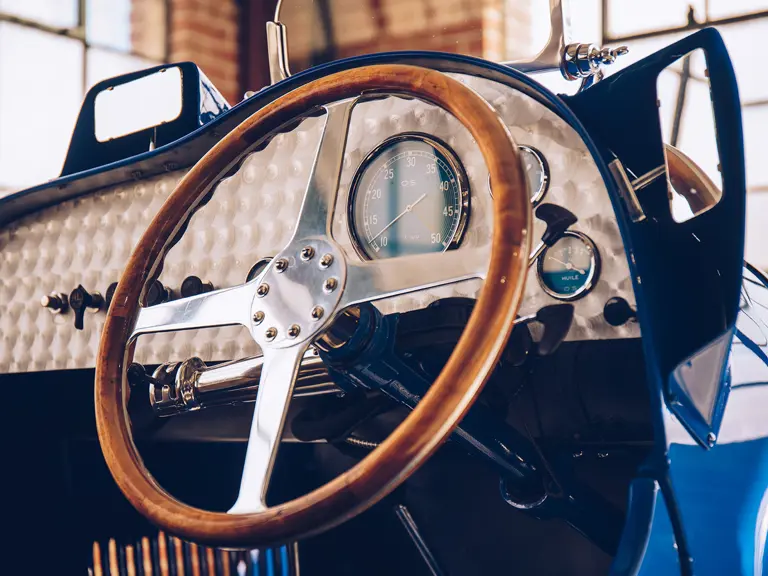

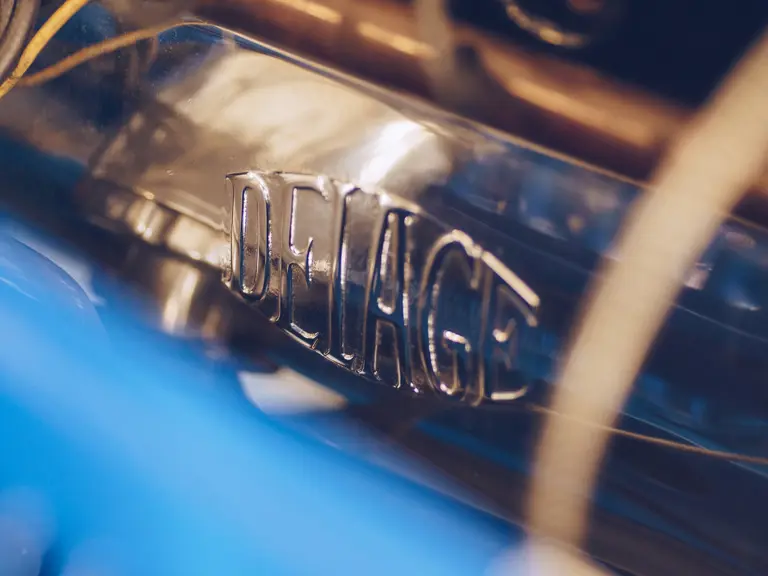
 | Monterey, California
| Monterey, California


